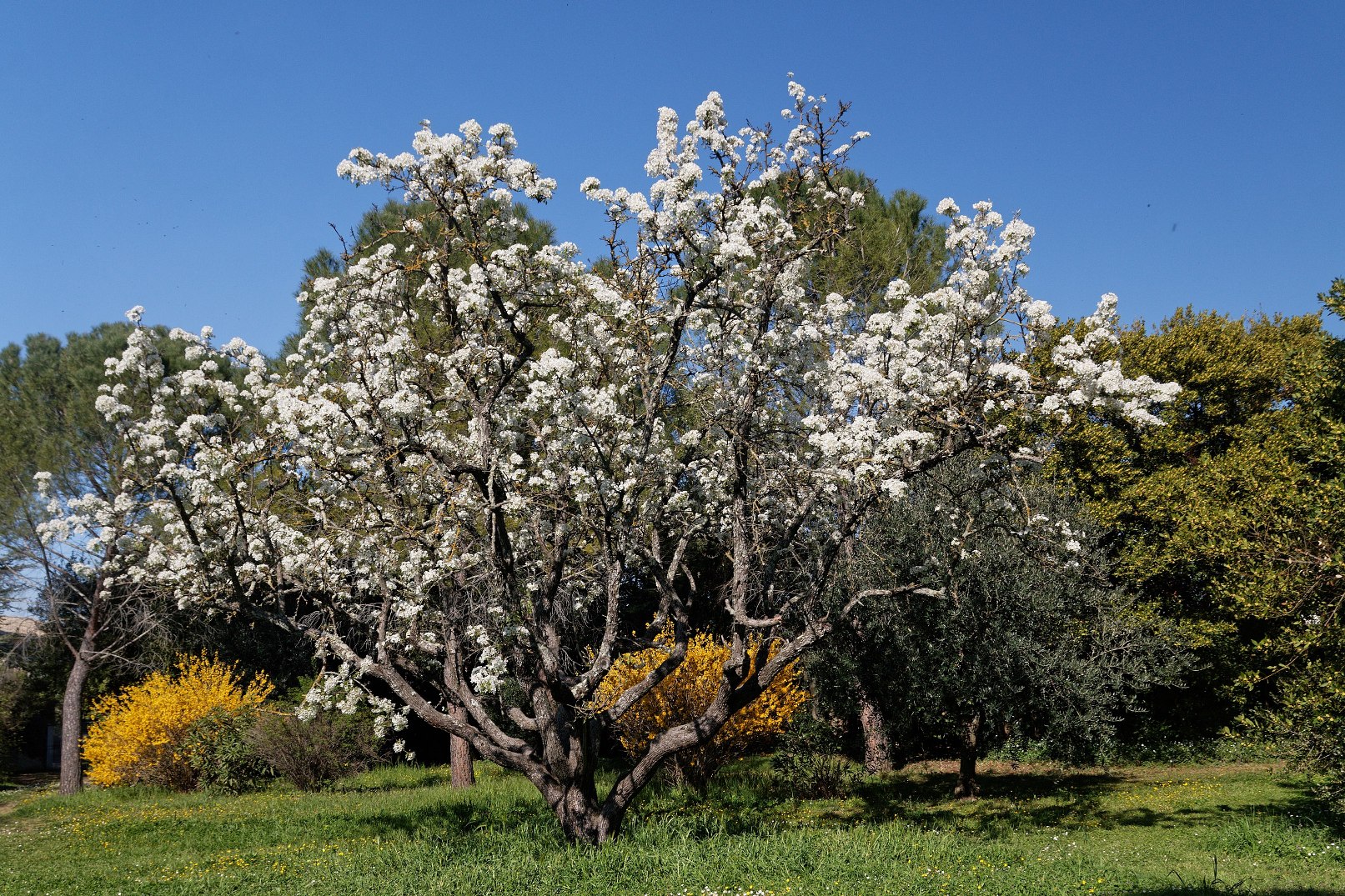Pyrus communis
Pear
Species Tolerances
- Drought Tolerance: Medium
- Shade Tolerance: Yes
- Waterlogging Tolerance: Low
- Frost Tolerance (trees from warmer climates may be frost tolerant, but their flowers may not be): Yes
- RHS Hardiness: H6
- Optimum Conditions for Growth:
A medium to large tree (though a dwarfing rootstock can be used). Deep rooted and tolerant of drought, high soil moisture and smoke pollution. Best on fertile soils where there are no severe spring frosts. Flowers being frost sensitive can be fan-grown along south-facing walls, or free-standing in milder areas of the British Isles. - Susceptibility to Pest/Disease:
Can be prone to bacterial disease such as fire blight or fungal disease such as pear scab

Pyrus communis Daniel VILLAFRUELA https://creativecommons.org/licenses/by-sa/4.0/deed.en
Service to Pollinators
- Summary of Service to Pollinators:
Good source of nectar and pollen in spring, although not such a rich nectar source as apple. Honeydew also produced when aphids are active. - Nectar Value to Pollinators: 3 (of 0-3)
- Honeydew Value to Pollinators: 1 (of 0-3)
- Pollen Value to Bees: 3 (of 0-3)
- Flowering Period: April
Risks
- Human Toxicity: Non-toxic
- Livestock Toxicity: Non-toxic
- Invasive Risk: No
- Suckering: No
Products
- Edible Fruit: Yes
- Edible Leaves: No
- Edible Sap: No
- Edible Seeds: No
- Honey, major source in UK: Yes
- For any medicinal potential, see 'Further Details' below.
- Timber: Yes
- Livestock Fodder: Yes
- Other Products:
Timber has been used for wood-carving, turnery and for making musical instruments
Utility
- Nitrogen Fixation: No
- Organic Matter Accumulation: Yes
- Phytoremediation: Yes
- Deacidification: Insufficient Data
- Windbreak: No
- Soil Erosion Control: Yes
- Shade or Shelter: Yes
- Plant Support: Insufficient Data
- Integrated Pest Management: Insufficient Data
- Wildlife Value: Yes
- Wildlife Value Summary:
Mildly good for biodiversity referring to invertebrate diversity feeding on the tree, especially insects which benefit from honeydew when aphids are active. Fruit are available to a large range of birds and mammals. - Graduated Nativeness Classification ⓘ: 2 (of 1-10)1. Historic Native
2. Historic Introduction
9. Neutral Introduction
Further Details
This is the only fruit tree species which could grow tall enough to reach the woodland canopy. Frost sensitivity noted in winter on exposed sites